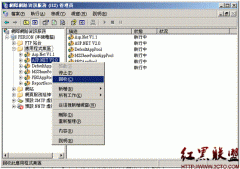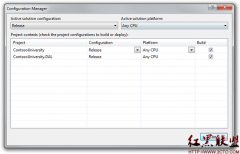ASP.NET自定义输出缓存提供程序
我们知道,自从ASP.NET 发布以来,页输出缓存使开发人员能够把由网页、控件及HTTP响应等生成的输出内容存储到内存中。这样一来,在后面的Web请求时,系统能够从内存检索这些生成的输出内容而不是从头开始重新生成输出,从而使ASP.NET可以更迅速地提供内容,在性能上得到了很大的提高。但是,这种方法确有一个限制:即生成的内容一定要存储在内存中。这样一来,服务器将承受巨大流量带来的压力,输出缓存消耗的内存与来自Web应用程序的其他部分的内存需求之间导致严重冲突。
针对上述情况,ASP.NET 4针对输出缓存增加了一个扩展点,它能够使你可以配置一个或多个自定义输出缓存提供程序。输出缓存提供程序可以使用任何的存储机制来存储HTML内容。这使得开发者有可能针对不同的持久性机制来创建自定义的输出缓存提供程序,其中可以包括本地或远程磁盘、数据库、云存储和分布式缓存引擎(如velocity、memcached)等等。
要实现自定义输出缓存提供程序,你可以通过从System.Web.Caching.OutputCacheProvider类中派生一个类来创建自定义输出缓存提供程序。例如,下面的MyOutputCacheProvider类就是派生自OutputCacheProvider类,并创建了一个自定义输出缓存提供程序,如代码清单19-5所示:
代码清单19-5:MyOutputCacheProvider.cs
using System;
using System.Collections.Generic;
using System.IO;
using System.Linq;
using System.Runtime.Serialization.Formatters.Binary;
using System.Timers;
using System.Web.Caching;
using System.Collections.Concurrent;
namespace _19_1
{
public class MyOutputCacheProvider : OutputCacheProvider
{
private Timer timer;
private string cachePath = "C:\\Cache\\";
private ConcurrentDictionary<string, DateTime>
cacheExpireList;
private const string KEY_PREFIX = "__outputCache_";
public MyOutputCacheProvider()
{
cacheExpireList =
new ConcurrentDictionary<string, DateTime>();
timer = new Timer(3000);
timer.Elapsed += (o, e) =>
{
var discardedList = from cacheItem in cacheExpireList
where cacheItem.Value < DateTime.Now
select cacheItem;
相关新闻>>
- 发表评论
-
- 最新评论 进入详细评论页>>



